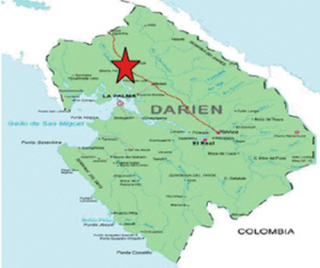Rio Iglesia, Panama
![]()
![]()
![]()
![]()
![]()
![]()
![]() Click on Programs to learn more about their work in this community
Click on Programs to learn more about their work in this community
General Information

| Population* | 350 |
| Number of homes | 100 |
| Avg # of people per home | 3-5 |
| Electricity | In some parts |
| Corregimiento | Rio Iglesia |
| District | Chepigana |
| Corresponding Health Center | Centro de Salud – Meteti |
| Distance from compounds | 30 minutes from Pro Niños |
| Road conditions | Average |
* Population does not reflect how many patients will be seen on medical
brigades as many people from surrounding communities come seeking
Medical Brigades medical attention.
Expressed Needs and Capacities
The community has expressed several strengths. Many craftswomen live in the community and
dedicate their time to making traditional artisan crafts. In addition, there is a strong agricultural
sector run primarily by the men. The community has also expressed a desire to improve its community members' health, the transportation for children to go to school, and filters for its water system.
Rio Iglesia's education system has one school: a primary school in the center of the community that caters to children between the grades of Kindergarten and 6th grade. The school currently has 7 teachers that instruct 90 students; each teacher has a classroom. Additionally, the school has a kitchen, dining area, a library, a playground, and a computer center. 40 of the community's students are attending the region's secondary school, which continues the students' education through 9th grade.
Rio Iglesia has a gravity-run aqueduct water system that is connected to everyone in the community. The community members pay a cost of $2 per month to be part of the system. The source of their water comes from about 5 kilometers away. The community does not chlorinate their water through the water system; instead, the community members purify their water by chlorinating it at home, by boiling the water, and by filtering it. Additionally, Rio Iglesia has a water committee that meets monthly.
Rio Iglesia does not have a full-fledged Centro de Salud (health center); however, it is lucky enough to have a Sub-Centro de Salud which provides some medical care to the community. The Sub-Centro de Salud is staffed by a health assistant, a healthcare professional that has approximately 6 months of medical training.
The three most common health ailments of the community are parasitic infections, common colds, and fevers. The community has no access to dental care other than Dental Brigades. The community has not received aid from organizations other than Global Brigades. The community's health committee periodically goes around the community and offers health training.
Rio Iglesia's public health situation is fairly strong, besides it's water filtration. 90% of Rio Iglesia uses pit latrines, everyone in the community uses gas stoves, and 95% of the community has concrete floors in their homes. However, only 3 people in the entire community have a water filter to purify their water.
Homes in Rio Iglesia are primarily constructed using three materials: cinder blocks, wood, and zinc. Agriculture, specifically growing corn, is the main source of employment for the community. 60% of the community also works to create artisan crafts that are sold at the community and in Panama City. Lastly, there are a few small businesses in the community: a butcher shop, a kiosk, a few restaurants, and a workshop. The community's only access to credit is through the National Bank in Meteti, a town that is about 15 minutes away.
Rio Iglesia does not a have a formal method of disposing of garbage in the community. Community members burn their trash and do not recycle.
There are no legal aid organizations available in Rio Iglesia. The community members must travel to Santa Fe, a town that is about an hour away to receive any legal assistance. Thankfully, the vast majority of the community has land-ownership titles.
Rio Iglesia has one political representative: Illario Grajales.
Besides Global Brigades, the Panamanian government is the only organization that works with Rio Iglesia. Panama's Ministry of Health provides the support that allows the Sub-Centro de Salud medical facility to function.
Currently, Medical and Dental brigades are the only brigades working in this community.
Source of information: Key informant interview and 2010 government census
Date of interview: November 13th, 2013
Last updated: November 26th, 2013